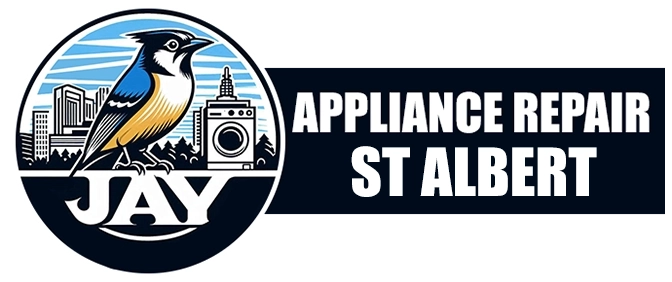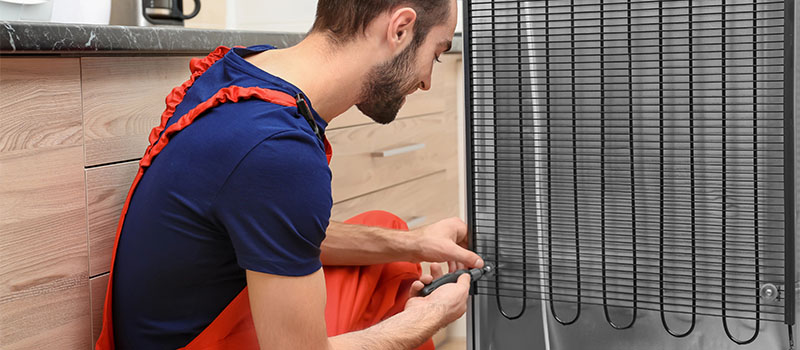When ice builds up inside a freezer, it usually points to a deeper issue than just leaving the door open too long. One of the most common causes is a defrost heater that has stopped working. We want to share practical ways to recognize this problem and steps you can take before it leads to spoiled food or costly repairs.
Understanding the Role of the Defrost Heater
Every frost-free freezer uses a defrost heater to melt away ice that naturally forms on the evaporator coils. These coils sit behind the back panel and are responsible for cooling the air. Without heat cycles to clear frost, the coils become trapped in thick ice. As a result, airflow slows down, and the freezer struggles to keep food at the right temperature.
We have seen that when the heater is not engaging, ice creeps along the back wall, often making shelves harder to move. In many cases, the fan that circulates air begins to whine or hum because blades strike frozen buildup. If this is left unchecked, cooling performance drops sharply, and you may notice food softening despite the constant cold environment.
Early Signs of Ice Buildup
One of the first signs that the heater is not activating is frost patterns that appear thicker than normal. While a light, powdery layer is expected, heavy slabs of ice indicate trouble. We often find that homeowners notice food packages sticking together or drawers freezing shut. These changes point to more than ordinary moisture freezing in the compartment.
Another clear indicator is water pooling inside the fridge section. Meltwater from frost buildup should normally drain away during defrost cycles. When the heater is not working, the water has nowhere to go, and it collects under crispers or on the floor of the unit. If you see repeated puddles, it is time to look deeper. For more detailed help, local appliance repair services St Albert can offer inspections and targeted solutions.
Why the Heater Fails
Failure usually comes from one of three sources: a burned-out heater element, a faulty defrost timer, or a defective control board. Each part plays a role in ensuring the heater turns on during scheduled cycles. When the element itself burns out, no heat is produced even though the controls are trying to activate it.
We sometimes find that the timer or electronic control is stuck, leaving the freezer in constant cooling mode without breaks for defrosting. Wiring issues can also block power from reaching the heater. Because each of these problems requires testing with a meter, it is not always possible for homeowners to diagnose on their own.
The Effect on Food and Energy
Thick frost does more than reduce space. It traps cold air around the coils and forces the compressor to run longer to maintain set temperatures. This constant strain uses more electricity and shortens the life of the appliance. We know from experience that customers often see higher bills when defrost heaters fail.
Food quality also suffers. Packages buried in ice tend to experience freezer burn faster. Moisture crystals damage texture, making meat tougher and vegetables limp. Ice buildup can even prevent the door from sealing properly, allowing warm air to sneak inside and worsen the cycle. Addressing the heater issue early prevents these avoidable problems.
Simple Checks Before Calling for Help
There are a few safe checks you can make before seeking service. First, unplug the unit and inspect the back panel inside the freezer. If it is covered in ice, the heater likely has not been cycling. Second, listen for the fan once power is restored. If the fan struggles or hits ice, it confirms heavy buildup.
You can also try to manually defrost by turning the appliance off for 24 hours and letting the ice melt. If the problem returns within a week or two, it is a strong sign that the defrost heater is not engaging. At that point, it is better to get professional testing and repair rather than continuing temporary fixes.
Extra Tip: Avoid Overloading the Freezer
Something that surprises many homeowners is how loading habits affect frost buildup. When we pack too many items tightly against the back wall, airflow becomes restricted. This makes frost form faster and heavier, giving the appearance of a heater issue. Always leave a small gap between food and the panel to let cold air circulate evenly.
This simple adjustment may not solve a failed heater but can help prevent additional stress while waiting for repair. It also keeps food safer by ensuring consistent temperatures in every corner. To keep all your appliances running smoothly, even unrelated units like dishwashers, it is useful to explore professional dishwasher repair in St Albert when signs of trouble appear.
When to Seek Professional Service
If frost returns quickly after a manual defrost or if you notice the freezer cannot keep food hard-frozen, it is time to arrange a service call. Our team has the tools to check continuity in the heater, test the timer, and confirm if the control board is providing power correctly. This ensures the real source of the issue is fixed.
Trying to replace these parts without training can create safety risks, especially since heaters are electrical components working inside a cold, damp environment. For peace of mind, scheduling service is always the safest path. If you are dealing with repeated ice buildup and want a lasting solution, it is best to contact us for direct help and scheduling.
FAQ
Why does ice form if I never open the freezer door?
Moisture enters every time the compressor cycles. Even without frequent door openings, the air inside still contains some water vapor that freezes on coils.
How often should a defrost cycle run?
Most units defrost every 8 to 12 hours. If frost is piling up quickly, the cycle is likely not engaging as it should.
Can I use a hair dryer to melt ice faster?
It is not recommended. The concentrated heat can damage plastic parts or crack panels. Letting ice melt naturally is safer.
Will unplugging the freezer reset the defrost system?
In some cases, power resets can help a stuck control board, but if ice buildup returns, the underlying fault is still present.
Is frost ever normal in a frost-free freezer?
A thin layer of light frost is normal. It becomes a problem only when it turns into thick sheets or blocks airflow.

